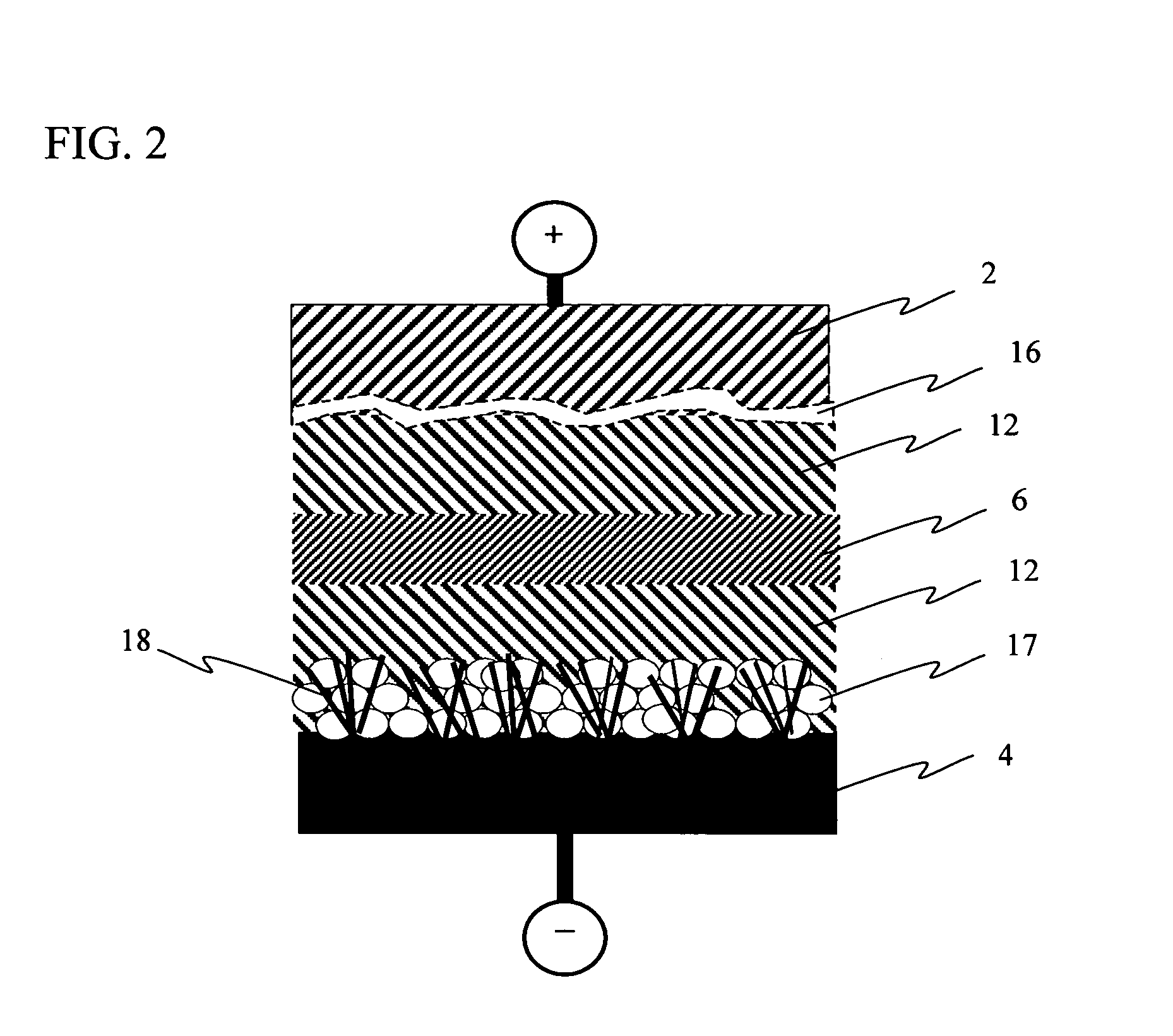Solid electrolytic capacitor and manufacturing method of the same
a technology of solid electrolytic capacitors and manufacturing methods, which is applied in the direction of liquid electrolytic capacitors, wound capacitors, fixed capacitors, etc., can solve the problems of capacitors having a high achievement ratio, affecting the performance of capacitors, so as to reduce the tan and esr, and reduce the interface resistance between cathode foils and conducting polymers
- Summary
- Abstract
- Description
- Claims
- Application Information
AI Technical Summary
Benefits of technology
Problems solved by technology
Method used
Image
Examples
example 1
[0043]In an example 1, the solid electrolytic capacitor 100 shown in FIG. 1 was formed. The anode foil 2 was formed of an aluminum foil, which was subjected to an etching treatment and a chemical treatment and had 0.7 cm width, 11.5 cm length, and 100 μm thickness. The cathode foil 4 was formed of an aluminum, which had 0.7 cm width, 13.1 cm length and 50 μm thickness. Whiskers were formed on the surface of the cathode foil 4. The whiskers held carbide grains. The thickness of the layer where the carbide grains were held was 2 μm. An electrolytic paper mainly formed of Manila fiber was used for the separator paper 6. The normal rated voltage of the capacitor 1 was 4WV.
[0044]Next, after rolling the anode foil 2 and the cathode foil 4 together across the separator paper 6, the anode foil 2 was subjected to a chemical treatment at a voltage near the formation voltage of the dielectric oxide layer of the anode foil 2 using chemical liquid mainly containing 0.5% to 2% ammonium adipate by...
example 2
[0047]In an example 2, the solid electrolytic capacitor 100a shown in FIG. 3 was formed. The anode foil 2 was formed of an aluminum foil, which was subjected to an etching treatment and a chemical treatment and had 0.7 cm width, 17.5 cm length, and 110 μm thickness. The cathode foil 4 was formed of an aluminum, which had 0.7 cm width, 19.1 cm length and 50 μm thickness. Whiskers were formed on the surface of the cathode foil 4. The whiskers held carbide grains. The thickness of the layer in which the whiskers held the carbide grains was 2 μm. A nonwoven fabric formed of polyethylene terephthalate was used for the separator paper 6. The normal rated voltage of the capacitor 1 was 4WV.
[0048]Next, after rolling the anode foil 2 and the cathode foil 4 together across the separator paper 6, the anode foil 2 was subjected to a chemical treatment at a voltage near the formation voltage of the dielectric oxide layer of the anode foil 2 using chemical liquid mainly containing 0.5% to 2% ammo...
PUM
| Property | Measurement | Unit |
|---|---|---|
| thickness | aaaaa | aaaaa |
| diameter | aaaaa | aaaaa |
| thickness | aaaaa | aaaaa |
Abstract
Description
Claims
Application Information
 Login to View More
Login to View More - R&D
- Intellectual Property
- Life Sciences
- Materials
- Tech Scout
- Unparalleled Data Quality
- Higher Quality Content
- 60% Fewer Hallucinations
Browse by: Latest US Patents, China's latest patents, Technical Efficacy Thesaurus, Application Domain, Technology Topic, Popular Technical Reports.
© 2025 PatSnap. All rights reserved.Legal|Privacy policy|Modern Slavery Act Transparency Statement|Sitemap|About US| Contact US: help@patsnap.com



